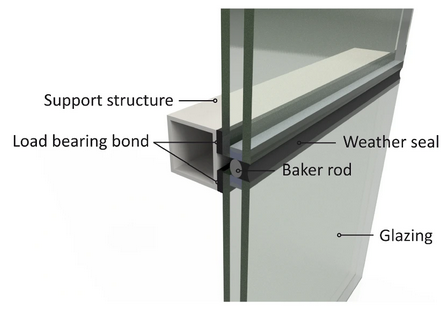Time-Dependent Design of Hyperelastic Bonded Joints in Structural Glass

Abstract
For glass constructions with a high degree of transparency, facade systems with structural sealant glazing are increasingly being used. However, the use of bonded joints is also suitable for many other applications in glass construction. Even today, the design of bonded joints is still based on the outdated global safety concept according to ETAG 002. Although the safety and predictability of hyperelastic
silicone bonds have been continuously shown by research activities during recent years, high levels of safety are still required in the design, which is mainly due to the expected degradation of the adhesive. From a design perspective, it is necessary to consider the time dependency. On the one hand, the bonded joint must be able to withstand variable loads of different strain rates at any time during its service life, taking degradation into account. On the other hand, if the bonded joint is also under a permanent load due to dead load of the glazing, it must also be ensured that the failure time would only be attained at the end of the component's service life. This article presents a fully probabilistic method that considers the degradation of the adhesive as well as various statistical influencing quantities (such as wind effects, manufacturing tolerances or material scattering) and determines a modification coefficient 𝑘𝑚𝑜𝑑 for silicone adhesives under variable loads by calibrating to specified reliability indices. In addition, partial safety factors are determined in accordance with Eurocode 0, which are investigated as part of a sensitivity analysis.
Published
Issue
Section
Adhesives & Composites
License
Copyright (c) 2024 Benjamin Schaaf, Markus Feldmann

This work is licensed under a Creative Commons Attribution 4.0 International License.



